If there would be one style I would like to play it would be blues. With my 15-minutes-a-day I am not as fast as I would like to, but after all there are so many things you “have to do” (earning some money to live on is not the least of them!). Hereby a short summary of learnings and “cheat-sheets”.
So the standard 12-bar blues goes like the following:

Where “I” means playing I-chord for 1 bar.
Where I denotes the “root” chord and IV and V are the corresponding chords with the IV-th and V-th root notes. Hereby the “cheat sheet” for the notes:
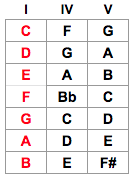
But there is even an easier way to play this on a guitar neck.
Hereby the diagram including the position on the neck where the commonly played positions of the notes can be found:
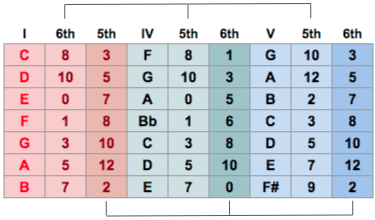
For example, when you start on 6th string in a key of C, you can play I-chord with the root on fret 8 and then IV-chord on the 5th string on fret 8 (F) and the V-chord with the root on string 5 fret 10 (G).
When you start on 5th string in a key of G, you can play I-chord with the root on fret 10 and then IV-chord on the 6th string on fret 8 (C) and the V-chord with the root on string 6 fret 10 (D).
I-chord on the 6th string
So when the I-chord (root note) is on the 6th string:
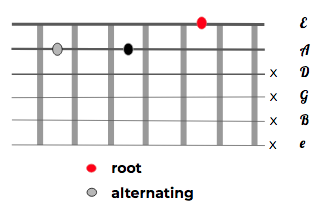
The root notes of the IV- and V-chords can be easily located by using the following pattern:
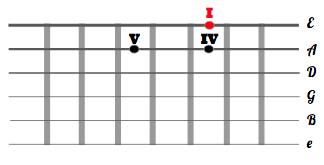
I-chord on the 5th string
When the I-chord is on the 5th string:
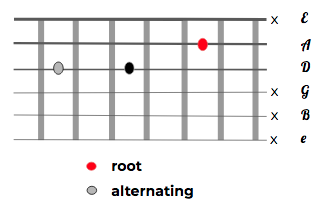
The root notes of the IV- and V-chords can be located by using the following pattern:
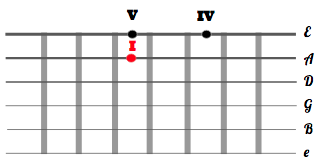
Alternative shuffle patterns
Some alternative patterns presented below. The alternations are shown in bold:
The “quick change”:

The “long V”:

The “climb”:

where the “climb” is played by shifting by 5 frets and then moving 2, 1, 1, 1 frets correspondingly form I to IV chord. So in case of C it would be C, D, D#, E.
See also excellent explanation on Justin Guitar.
Enjoy!


